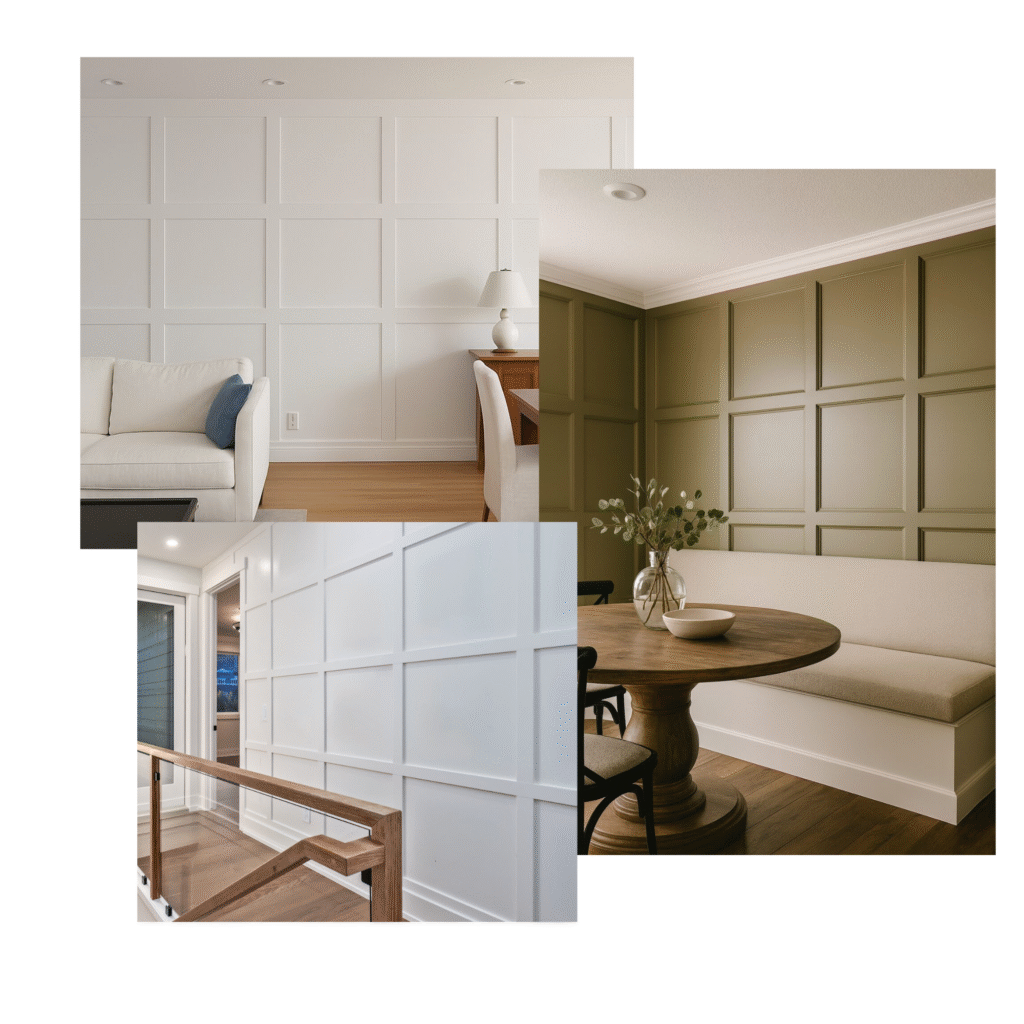When it comes to finish carpentry in your home, selecting the right materials is crucial for achieving the desired aesthetic and durability. Among the plethora of options available, solid wood and painted Medium-Density Fiberboard (MDF) stand out as popular choices. In this guide, we’ll delve into the characteristics, pros, and cons of each material to help you make an informed decision.


Solid Wood
Characteristics: Solid wood is exactly what it sounds like – wood in its natural form, typically sourced from trees like oak, maple, cherry, or walnut. It’s renowned for its timeless beauty, natural variations in grain patterns, and durability.
Pros:
- Aesthetic Appeal: Solid wood exudes warmth and character, adding a touch of elegance to any space.
- Durability: When properly maintained, solid wood can last for generations, standing up well to wear and tear.
- Versatility: It can be stained, painted, or left unfinished to match your desired aesthetic.
Cons:
- Cost: Solid wood tends to be more expensive than engineered alternatives like MDF.
- Susceptibility to Moisture: Solid wood can warp or crack when exposed to fluctuations in humidity, making it less suitable for high-moisture environments like bathrooms.
- Prone to Scratches: While solid wood is durable, it is susceptible to scratches and dents, requiring occasional maintenance.
Painted MDF (Medium-Density Fiberboard)
Characteristics: MDF is an engineered wood product made by breaking down hardwood or softwood residuals into wood fibers, often combined with wax and resin binders. It’s then compressed under high pressure to form dense panels.
Pros:
- Smooth Surface: MDF offers a uniform and smooth surface, ideal for achieving a flawless painted finish.
- Cost-Effective: Compared to solid wood, MDF is generally more affordable, making it an attractive option for budget-conscious homeowners.
- Stability: MDF is less prone to warping or expanding in response to changes in humidity, making it suitable for various environments.
Cons:
- Limited Aesthetics: While MDF can be painted to mimic the appearance of wood, it lacks the natural beauty and texture of solid wood.
- Susceptible to Moisture: While more stable than solid wood, MDF can still swell or degrade when exposed to moisture for prolonged periods.
- Not as Durable: MDF is more prone to chipping and denting compared to solid wood, requiring careful handling.
Choosing the Right Material for Your Project
Ultimately, the choice between solid wood and painted MDF comes down to your specific needs, preferences, and budget. Consider the following factors:
- Budget: If you’re working within a tight budget, painted MDF may be the more economical option without sacrificing quality.
- Aesthetic Preferences: If you value the natural beauty and warmth of wood, solid wood may be the ideal choice for achieving a timeless look.
- Environmental Conditions: Consider the environment in which the finished carpentry will be installed. For high-moisture areas like bathrooms or kitchens, MDF may offer greater stability.
- Maintenance: Factor in the level of maintenance you’re willing to undertake. Solid wood may require more upkeep to preserve its appearance compared to painted MDF.
Whether you opt for the classic elegance of solid wood or the cost-effective practicality of painted MDF, both materials offer unique advantages for finish carpentry projects in your home. By weighing the pros and cons outlined in this guide and considering your specific requirements, you can confidently choose the material that best suits your needs, ensuring a beautiful and long-lasting result.
Ready to get started?
Ready to take the first step in creating a living space that reflects your unique style?
Contact us today and get a FREE estimate!

